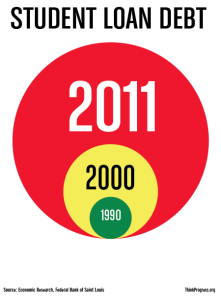There’s been some mainstream commentary suggesting that the housing market is close to a recovery and that household formation is set to surge. Derek Thompson at The Atlantic:
“Household formation is miserable now, but it’s projected to pick up for a simple reason: an improving economy is bound to encourage young people to get out, buy apartments, and get married, eventually. How fast they start gobbling up apartments and houses is unclear.”
Neil Irwin at the Washington Post:
“In the first six months of 2012, the growth rate of the economy, excluding gains in housing, was about 1.35 percent. If everything else — consumer spending, business investment, exports and government spending — continued growing at the same pace it has in 2012, the gain in housing then would put overall growth in the coming year at about 3.25 percent.
{…}
That would mean an additional $262 billion in economic activity, which, if recent relationships between dollars of residential investment and housing starts hold up, would translate into an additional 517,000 homes being built every year — meaning that the 872,000 annual rate of housing starts that the Census reported Wednesday would rise by a cumulative 59 percent in the coming 12 months.
While all this may seem like an naively sunny scenario — and it would be great news for the economy if it materializes — keep in mind that it is hardly presenting an outlandish sort of boom for housing.
Rather, this is what would happen if housing returns to its average role in the economy of the pre-bubble 1990s and did so in the coming 12 months.
The dark clouds are these: We don’t know for sure whether the gains in September housing activity are a short-term blip, one of the kinds of ups and downs we have seen too often in this recovery, or something more. And this scenario assumes that the other sectors of the economy keep holding up their current growth rates.”
They both include some obvious qualifiers, but it seems to be an instance of hope rather than certainty. I hope the recovery plays out like they predict, but there’s plenty of worrying signs that remain. Underemployment and stagnant wages remain a very real problem.
Generation Y professionals entering the workforce are finding careers that once were gateways to high pay and upwardly mobile lives turning into detours and dead ends. Average incomes for individuals ages 25 to 34 have fallen 8 percent, double the adult population’s total drop, since the recession began in December 2007. Their unemployment rate remains stuck one-half to 1 percentage point above the national figure.
Three and a half years after the worst recession since the Great Depression, the earnings and employment gap between those in the under-35 population and their parents and grandparents threatens to unravel the American dream of each generation doing better than the last. The nation’s younger workers have benefited least from an economic recovery that has been the most uneven in recent history.
“This generation will be permanently depressed and will be on a lower path of income for probably all of their life — and at least the next 10 years,” says Rutgers professor Cliff Zukin, a senior research fellow at the university’s John J. Heldrich Center for Workforce Development. Professionals who start out in jobs other than their first choice tend to stay on the alternative path, earning less than they would have otherwise while becoming less likely to start over again later in preferred fields, Zukin says.
{…}
About 61 million people, one-fifth of the U.S. population, work at jobs where median earnings declined since 2007 even as the 1.2 million households whose incomes put them in the top 1 percent saw their pay rise 5.5 percent last year. Younger workers are experiencing the worst of the disparity in part because they’re being displaced by older workers. The number of employees ages 55 to 64 is expected to surpass the under-24 working population by 2020 for the first time since at least World War II, according to the BLS.”
Typically, household formation is primarily driven by young adults striking out on their own. They begin earning more money and eventually save enough for a down payment. Their careers are stable enough where a mortgage payment becomes a manageable responsibility. That’s how it’s supposed to happen. Does that sound like today’s situation? What else is different from the typical story?
Oh. That’s going to put a crimp in saving for a down payment. Stories about an imminent housing recovery will eventually have to incorporate student loan debt into their narrative. Loan underwriters certainly will.


